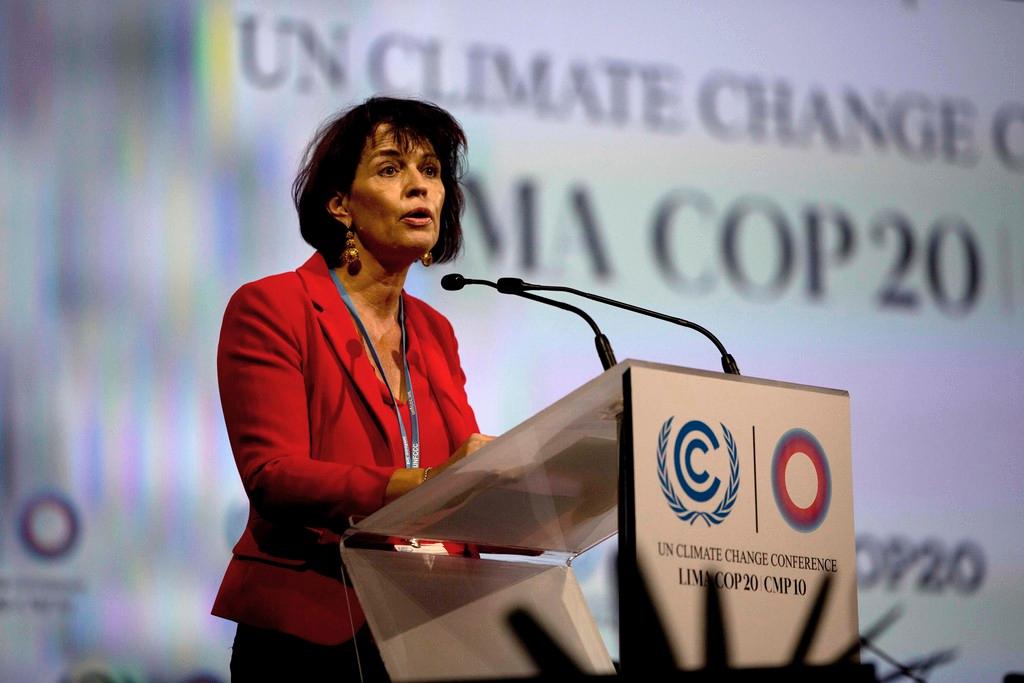Energy transition: taking stock and looking ahead
“2014 – a milestone on the way towards a climate-friendly and successful Switzerland”: this is what University of St Gallen professor Rolf Wüstenhagen would like to read in the annual review of 2050. The media response to the latest energy policy decisions looks different. The energy expert reviews the sceptics’ arguments and explains why the Swiss energy strategy is more than “illusion”, “subsidies” and “chaos”.
In the Swiss newsrooms journalists seem to be in agreement for once. If we believe the echo in the print media following the national parliament’s autumn session, Switzerland’s energy policy is on the wrong track. “A serious strategy would look different”, “National parliament opens the tap for subsidies”, “Energy turnaround plunges power supply into chaos” are the headlines across a variety of national newspapers. What was the momentous decision taken by representatives before the end of the year? Has parliament decided to break up the big banks? To abolish voting right for men? To nationalise the country’s flagship liberal newspaper, Neue Zürcher Zeitung?
None of the above. The representatives did what they were elected to do: they tried to find political majorities for balanced solutions in a complex area that is of enormous importance for Switzerland’s future. It need not exactly be celebrated as the finest hour of parliamentary democracy, and asking critical questions about political decisions is the quintessential function of independent media. But let us recall the fundamental reasons behind the Energy Strategy 2050.
Rolf WüstenhagenExternal link teaches at the at the Institute for Economy and the Environment of the University of St Gallen.
Reducing energy and climate risks
Firstly, like many other European countries, Switzerland’s energy supply is greatly dependent on foreign countries. Non-renewable sources of energy such as oil and uranium, which cover more than three quarters of the country’s energy consumption, must be imported from world regions, which in the past year have once again proved to be political powder kegs. With regard to energy, the foreign trade balance reports a gaping deficit of CHF10 billion a year; fossil fuel imports neutralise about half of the exports of the internationally successful Swiss watch industry. Secondly, there is increasing evidence of climate change. 2014 marks the warmest year on record, and extreme weather events have cost lives in Ticino, Switzerland’s Southern region. Yet, international climate policy once again did not manage to go beyond “too little, too late” at the latest UN summit in Lima.
A third factor are nuclear risks: three reactors, Beznau 1+2 and Mühleberg, score the first, fourth and sixth in the ranking of the oldest nuclear power plants still operating worldwide – an anachronism in a country, which in many ways can claim to be at the cutting edge of technology. The construction of new nuclear power plants cannot find a majority among Swiss people, and where this is aiming – as in the UK – it is based on government guarantees, which eclipse German solar power funding.
Against this background, the thrust of the energy strategy – gradually shifting from non-renewable to renewable energies, while improving energy efficiency – is a logical consequence and is backed by large parts of the population. Thousands of projects for power generation from renewable energies, and trail-blazing initiatives of municipalities and regions show that Swiss people are ready to walk the talk. Why, then, the bad press?
The sceptics’ three main points
In my view, the criticism expressed by the Energiewende sceptics focuses on three essential aspects, which can be encapsulated in the terms “illusion”, “subsidies” and “chaos”. The reproach that the objectives of the energy strategy are illusory is aimed at the cabinet’s intention of reducing energy consumption, in particular. It is true that a decrease in energy consumption would constitute the turnaround of a trend. Breaks in trends are a challenge for human imagination, but then perpetual growth is also little plausible. Landline telephony and food consumption have not grown in the last few years, yet we are no worse off than before.
Indeed, the suppliers of diets are enjoying a flourishing demand among health-conscious citizens. When it comes to energy consumption, a fear of government intervention and even of rationing lurks in the background. At the same time, people tend to forget that the consumption of non-renewable energies can also be curbed by personal saturation limits and technological innovations such as highly efficient LED lamps and e-bikes. And: doing nothing does not guarantee that one of these days we will not be confronted with limits imposed by external factors.
The second point at which the criticism is aimed are “subsidies”, particularly for the promotion of renewable energies. Feed-in tariffs have become the red rag for energy turnaround sceptics. This has resulted in remarkable coalitions: liberal politicians, economic modellers and the nuclear lobby unanimously call for “increased market orientation” and demand a switch to quota models or energy taxes, which in economic textbooks are praised as “first-best solutions”.
If we more closely look at where and how these economic instruments have been implemented in practise, they quickly lose much of their textbook appeal. The EU emission trading scheme and its susceptibility to political influence exerted by a few economic sectors provide plenty of illustrative examples. It remains to be seen whether everyone who is now calling for a transition from feed-in tariffs to economic instruments will support the popular initiative for a transition from VAT to energy taxes next year. If they do not, the question will arise as to how long we will lament the demise of the two birds in the bush before we can make friends with the bird in our hand.
Thirdly, there is the charge of “chaos”, often combined with a pointer to developments in Germany, whose energy transition serves as a projection surface for everything that can go wrong. What is often forgotten in this context, however, is that geographical proximity is also an opportunity to have a constructive and critical look at the challenges and experiences of a country. which pursues a similar energy policy approach at a higher speed. An atmosphere of mutual learning is no guarantee for perfect solutions, but with a generational project like Switzerland’s Energy Strategy 2050, doing everything right everywhere from the word go would be tantamount to squaring the circle. Every entrepreneur knows: there is no innovation without taking controlled risks.
A confident outlook
We have the unique opportunity today to lay one of the most important foundations for the economic development of Switzerland in the 21st century. The technological dynamism of the last few years has resulted in a situation whereby the changeover to sun, wind & co. is more affordable for us than for any previous generation. Intelligent grids and low-emission mobility are at the brink of a major breakthrough. Let us use this opportunity to ensure that our children will be able to look at the annual review of 2050 and read the headline “2014 – a milestone on the way towards a climate-friendly and successful Switzerland”.
Opinion series
swissinfo.ch publishes op-ed articles by contributors writing on a wide range of topics – Swiss issues or those that impact Switzerland. The selection of articles presents a diversity of opinions designed to enrich the debate on the issues discussed.

In compliance with the JTI standards
More: SWI swissinfo.ch certified by the Journalism Trust Initiative




You can find an overview of ongoing debates with our journalists here. Please join us!
If you want to start a conversation about a topic raised in this article or want to report factual errors, email us at english@swissinfo.ch.